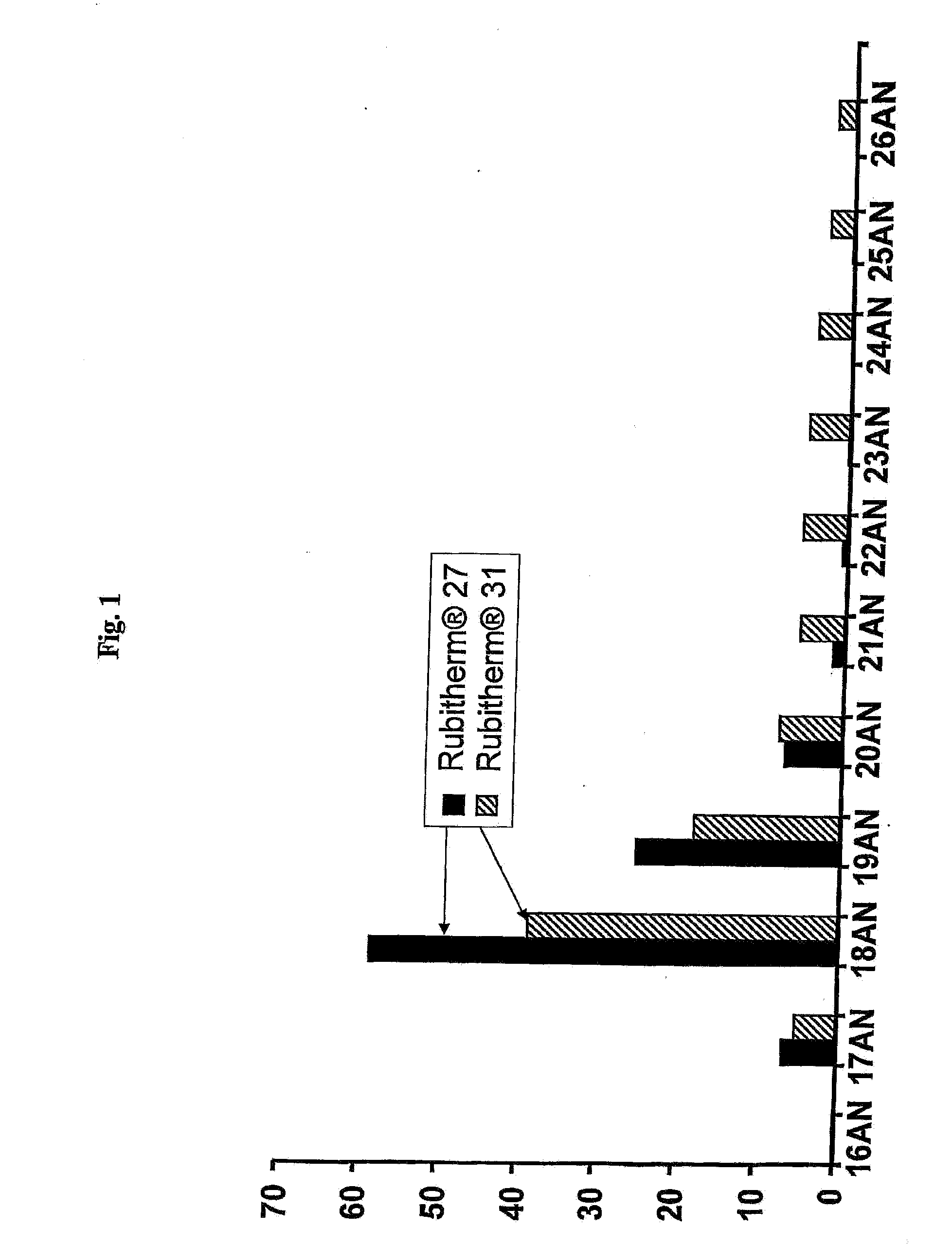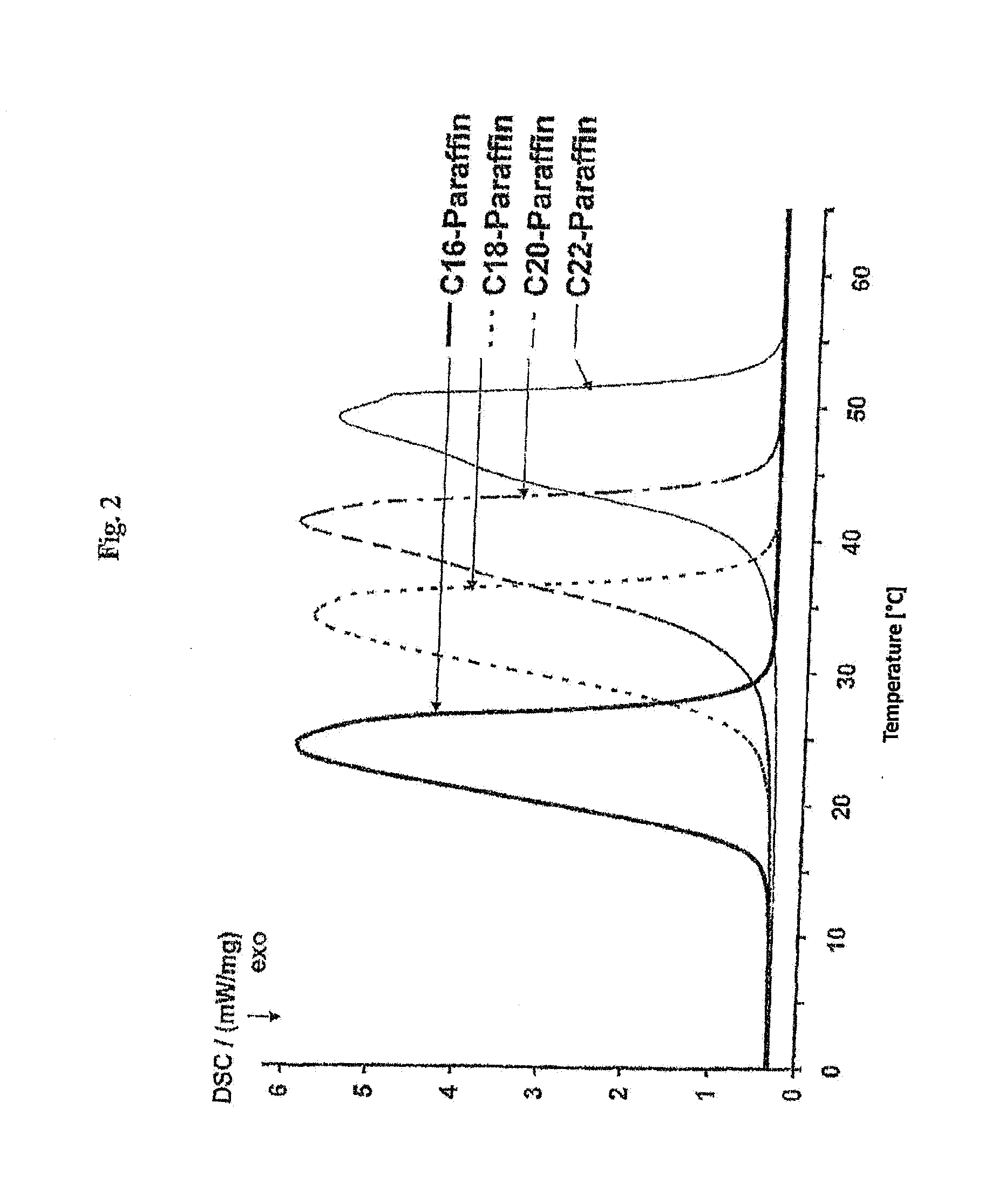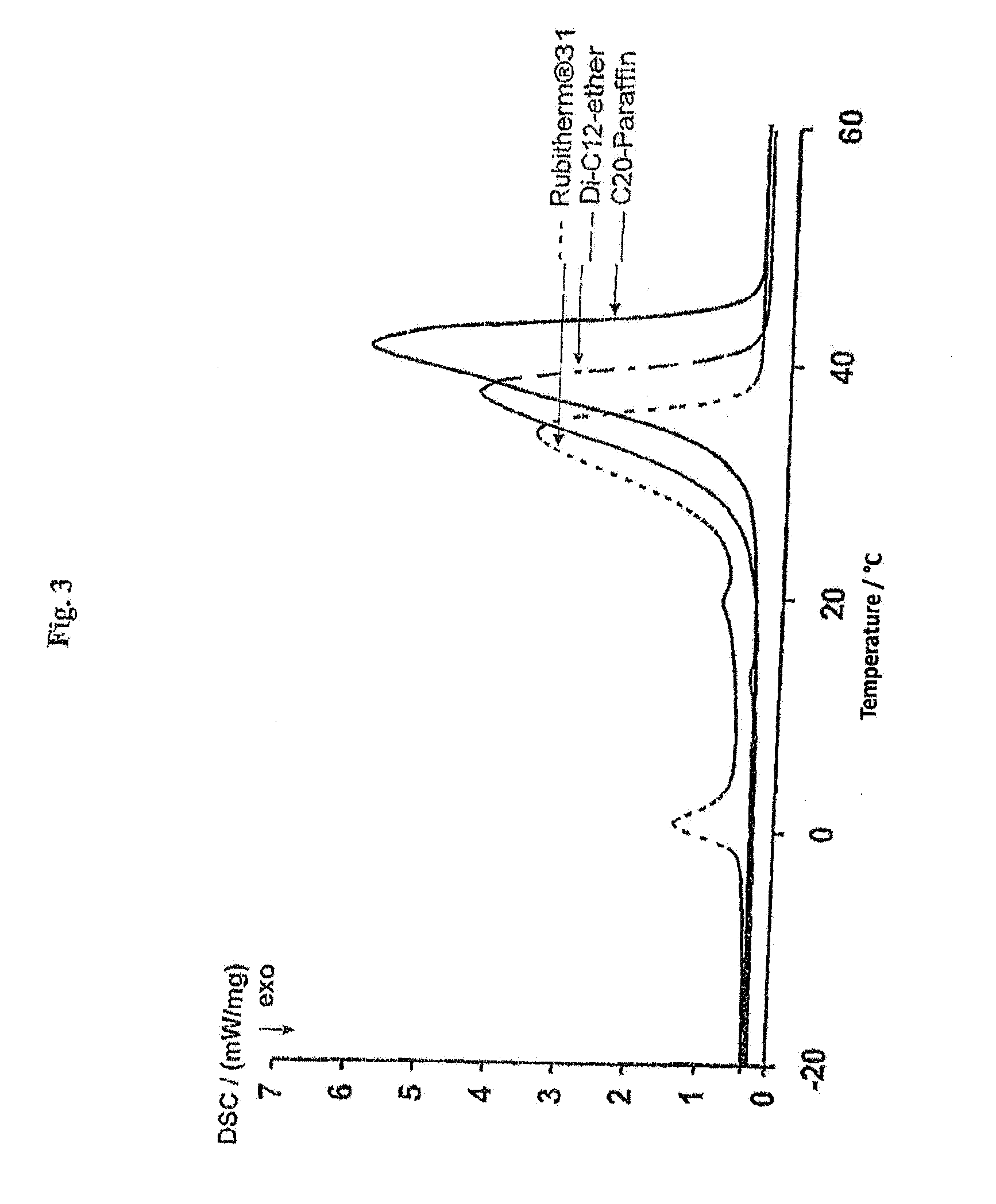Method for Producing a Latent Heat Storage Material and Dialkyl Ether as a Latent Heat Storage Material
a technology of dialkyl ether and latent heat storage material, which is applied in the direction of ether preparation, ether preparation, hydrocarbon preparation catalysts, etc., can solve the problem of clear lower melting enthalpy of highly linear paraffins
- Summary
- Abstract
- Description
- Claims
- Application Information
AI Technical Summary
Benefits of technology
Problems solved by technology
Method used
Image
Examples
experiment 1
Dehydrating Fatty Alcohols to Linear Olefins
[0040]2474 g of NACOL® 16-99 (purity 99.5%, based on renewable raw materials) were mixed with 500 g of Al2O3 and 60 ml of xylene in a 6 l flask and heated at up to 295° C., at the water separator for 4.5 hours. In that, 180 ml of water were formed. The hexadecene formed was distilled in vacuum. The yield was a mixture of alpha- and internal olefins.
experiment 2
Hydrogenation of Linear Olefins to Linear Paraffins
[0041]685 g of the hexadecene obtained in Experiment 1 were hydrogenated for 7 hours at 98 according to a known method over a heterogeneous Ni-containing catalyst at 20 bar H2 pressure and filtrated after cooling.
[0042]Fatty alcohols with chain lengths of C16 to C22 were used according to Experiments 1 and 2, and the following paraffins were obtained:
TABLE 2ParaffinHexadecaneOctadecaneEicosaneDocosanen-paraffin (main99.698.893.297.4component) [%]n-paraffin (total)99.898.996.898.6[%]iso-paraffin [%]0.20.11.81.2Onset [° C.]17.427.432.540.6Melting heat [J / g]245.6250.7247.2270.5
experiment 3
[0043]Experiments 1 and 2 were repeated, however, a synthetic fatty alcohol (hexadecanol) from the Ziegler process with a purity of 95.6% was used as the alcohol.
PUM
| Property | Measurement | Unit |
|---|---|---|
| particle sizes | aaaaa | aaaaa |
| particle sizes | aaaaa | aaaaa |
| particle sizes | aaaaa | aaaaa |
Abstract
Description
Claims
Application Information
 Login to View More
Login to View More - R&D
- Intellectual Property
- Life Sciences
- Materials
- Tech Scout
- Unparalleled Data Quality
- Higher Quality Content
- 60% Fewer Hallucinations
Browse by: Latest US Patents, China's latest patents, Technical Efficacy Thesaurus, Application Domain, Technology Topic, Popular Technical Reports.
© 2025 PatSnap. All rights reserved.Legal|Privacy policy|Modern Slavery Act Transparency Statement|Sitemap|About US| Contact US: help@patsnap.com



